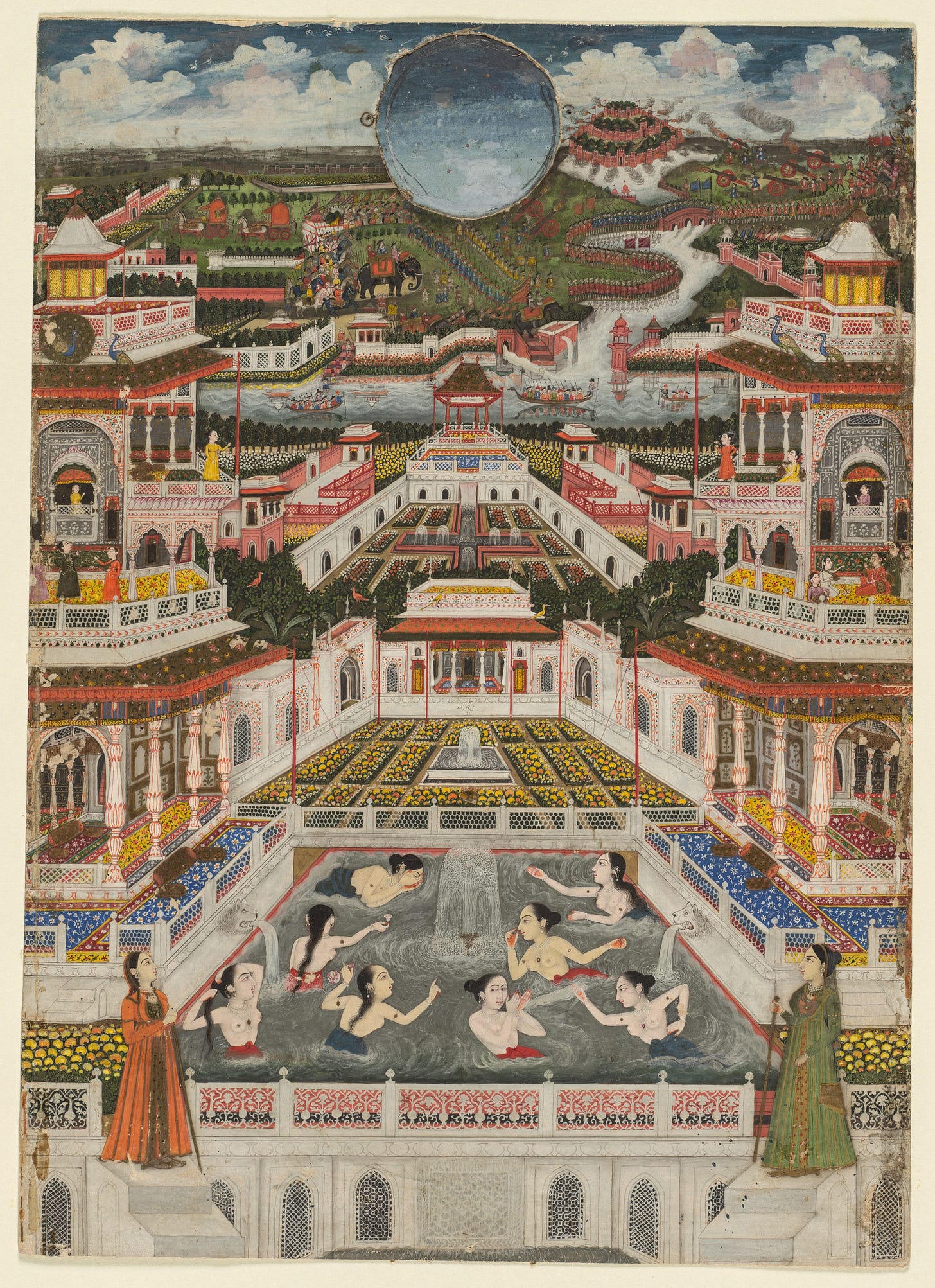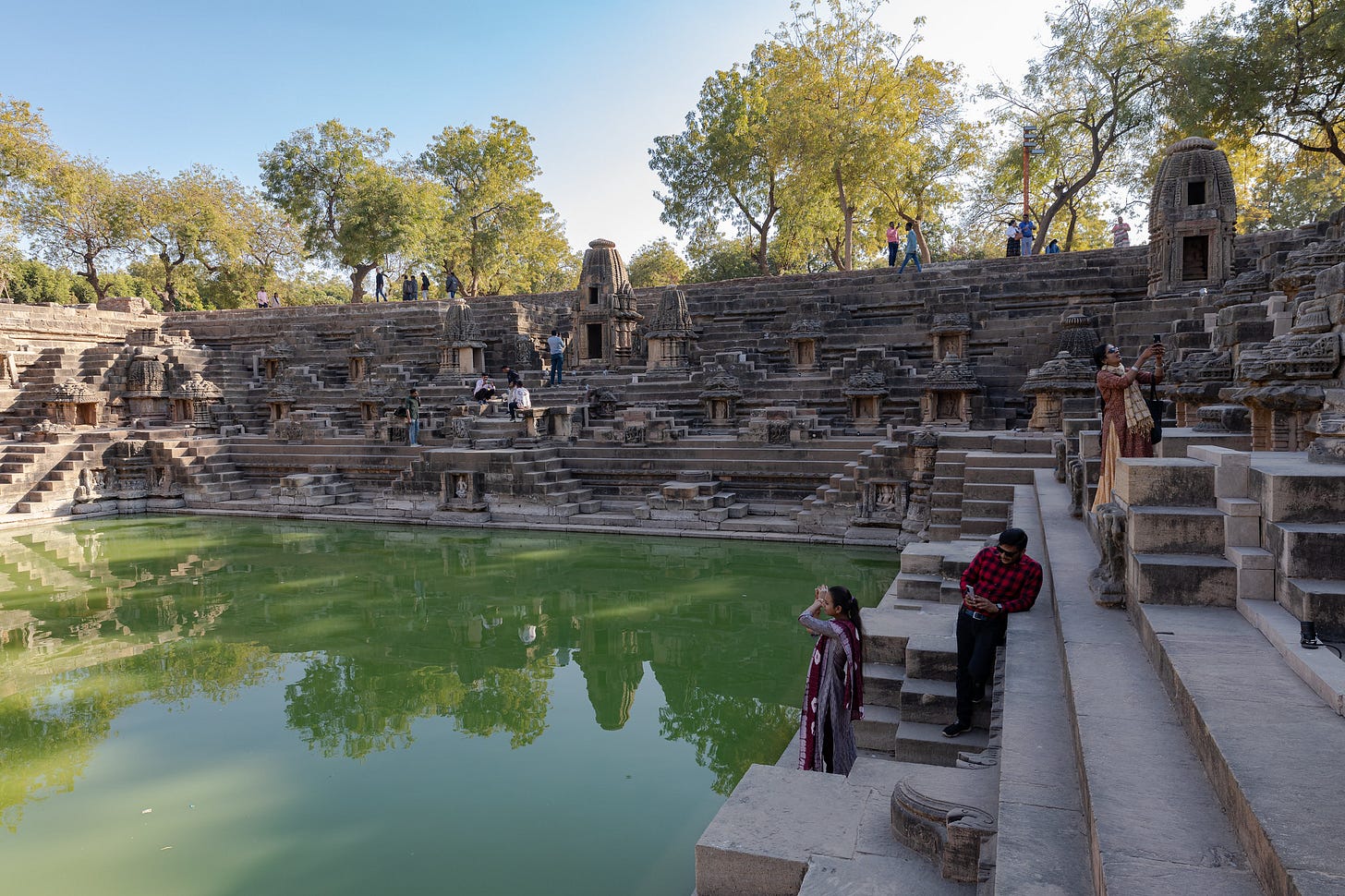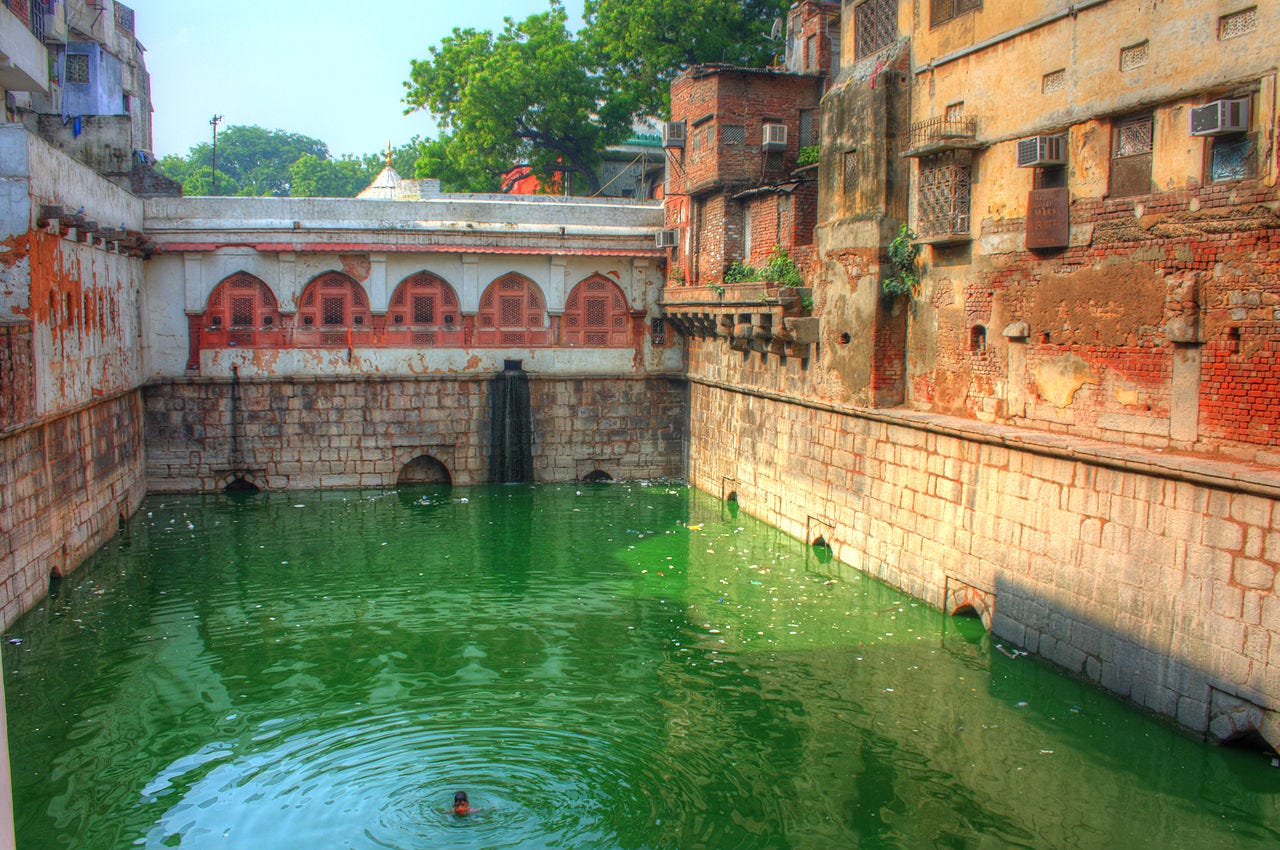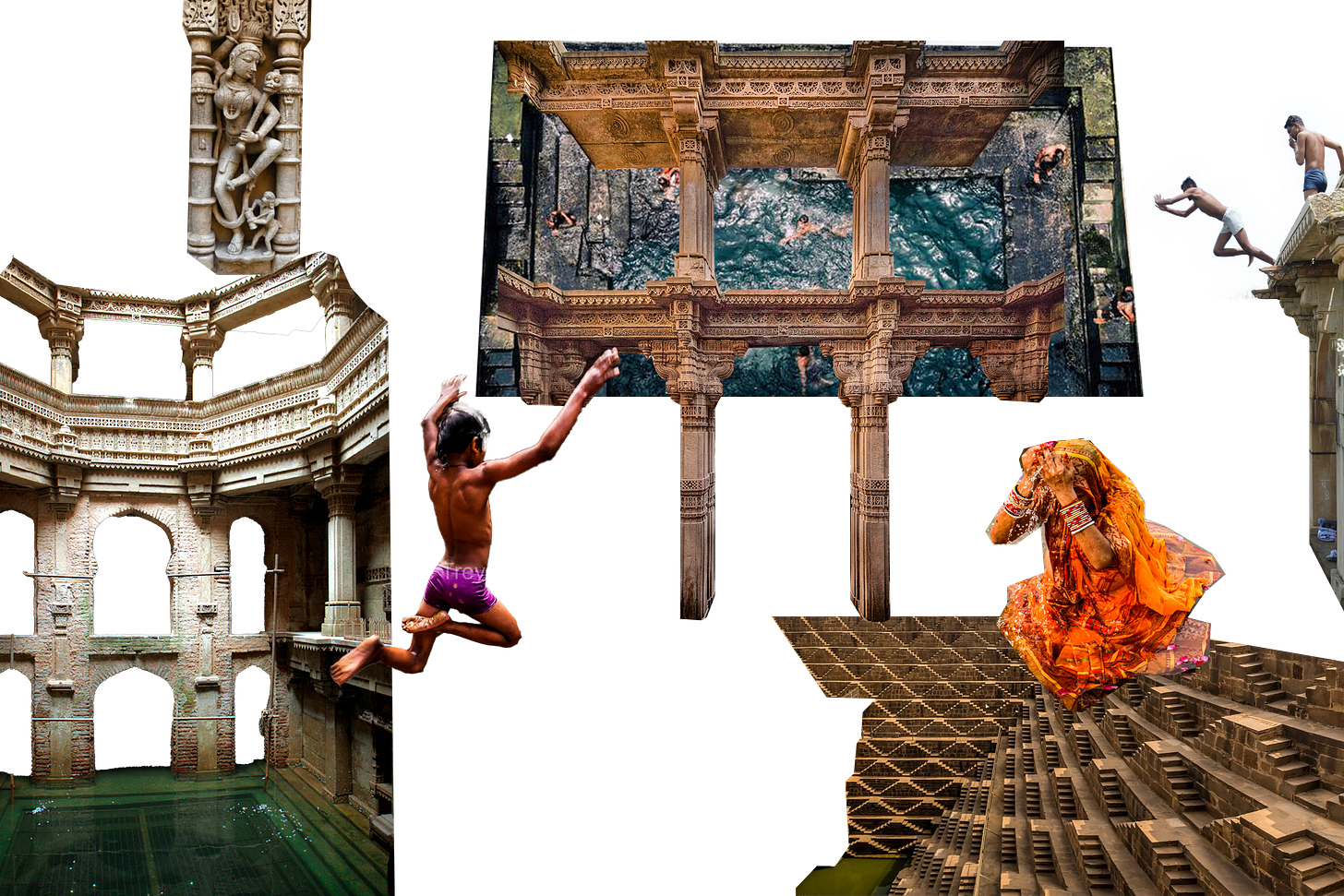Stepwells are India’s historic water structures, renowned for their extraordinary architecture and spiritual roots. Architect Priyanka Sheth shares her experience of their revival and renewed use for bathing.
I grew up in Ahmedabad, India, a metropolis of 7 million replete with exquisite historic water structures that I spent time documenting as a young architect. However, I had never associated them with bathing for fun, until I saw a group of boys swimming in a historic stepped tank brimming with water after heavy monsoon rains in 2014.
Monsoons, abundance, and celebration are intertwined in the cultural imagination of the region. Historic stepwells (and stepped ponds and tanks) are ingrained in that culture. Dating as far back as 500 CE, stepwells were used to collect and store monsoon rains, and give access to groundwater in the dry season. Seasonal fluctuations in water levels submerge and reveal the architecture of steps and shrines.
‘Local boys regularly bathe and show off their diving skills – a remarkable possibility in a country where swimming pools are a private luxury.’
Stepwells were ubiquitous until the 19th century when British colonial rule saw them as unhygienic and prevented their use. Innovations like the tubewell and centralized water supply accelerated their decline. Many were neglected or filled in and forgotten. Others dried up due to environmental degradation.
Today, these structures are being recognized as sophisticated water management systems and revived as places of cultural heritage, for bathing, and collecting water for non-potable uses. Here are some of my favorite bathing scenes:
Bathing in miniatures
South Asian bathing practices typically conjure images of ritualistic or religious bathing. But bathing and leisure were often depicted in Indian miniature paintings. This image shows women bathing joyfully in a walled royal harem bath in the foreground with men on the battlefield in the background in this intriguing panoramic painting.
Freedom to bathe

When it comes to the 21st century, structures that lack governmental protection offer greater freedom for the community to make them their own - especially if they still have water. Local people often use them for bathing – not for ritual, but for leisure! An example is Toorji ka Jhalra, an 18th-century stepwell in Jodhpur, which has found a new lease of life as a swimming destination after it was cleaned up after years of neglect. Local boys regularly bathe and show off their diving skills – a remarkable possibility in a country where swimming pools are a private luxury.
No bathing!
At water structures that are deemed to possess cultural heritage value (typically ones with ornamental stone carving), bathing is prohibited due to their protected status. The 11th-century stepped pond in Modhera and the 15th-century Rudabai stepwell in my home state were once full of life – but today you won’t find anyone dipping in the waters.
Sacred bathing
Historically, stepwells were integral to the everyday routines and social interactions of women who typically fetched water and did laundry. Rituals are still performed by women dressed in silks to honor the mother goddess by ceremonial immersion in the waters.
Women and girls rarely swim or splash around for fun in the public eye and hence there is a gender divide in bathing in community spaces, but I am optimistic that this will change over time. That said, it is fabulous when formerly declining water structures enter a new phase in their centuries-old life cycle – for the sheer joy of leisurely bathing!
Stepwell revival
Initiatives for rehabilitating stepwells for water conservation are also underway. The 700-year-old Nizamuddin Baoli is one of 16 stepwells that have been restored in Delhi. The urban conservation project contributes an additional 33,000 gallons of water per day to the water system, while a project in Jodhpur contributes an astounding 6.2 million gallons for irrigation and domestic use.
Priyanka Sheth @priyankasheth13
Read more in Priyanka’s book Stepwells of Ahmedabad: Water, gender, heritage
Architectural wonders to visit
Rani Ki Vav (The Queen’s Stepwell), Patan, Gujarat
Priyanka’s favorite stepwell for its architectural and artistic grandeur. Images of the 10th century stepwell don’t do justice to this stepwell’s scale and intricacy.
Rudabai stepwell, Adalaj, Gujarat
This 15th century stepwell is used as a backdrop for cultural and music festivals including the Adalaj Water Festival
Chand Baori
At 30m deep, Chand Baori is one of India’s deepest stepwells with 3,500 narrow steps over 13 stories. It was first built in the 8-9th century.
Bathing in the news
“I felt a sense of ecstasy as my skin seemed to glow and my mind decluttered.” Finland Says It Can Teach Tourists To Be Happy. Challenge Accepted.
New York Times, March 31, 2025
Leonard Koren on Life as an Aesthetic Experience
Time Sensitive, April 2, 2025
$800 million European-style wellness resort planned near downtown Dallas
The Dallas Morning News, March 25, 2025
D.C. announces plan for a wellness resort at Poplar Point
Washington Post, March 21, 2025
One last thing
The joy of bathing! Locals taking their annual opportunity to bathe at the heritage site of Chand Baori in Rajasthan, built 1125 years ago.
We’d love to hear from you - please send a DM, or email hello@cultureofbathing.com











love this